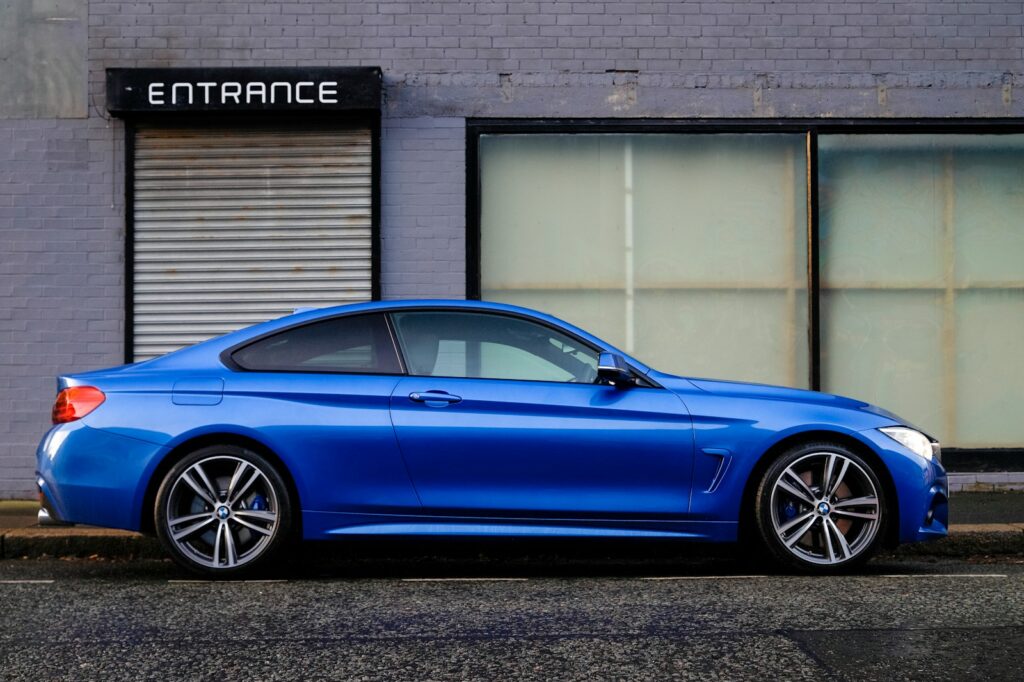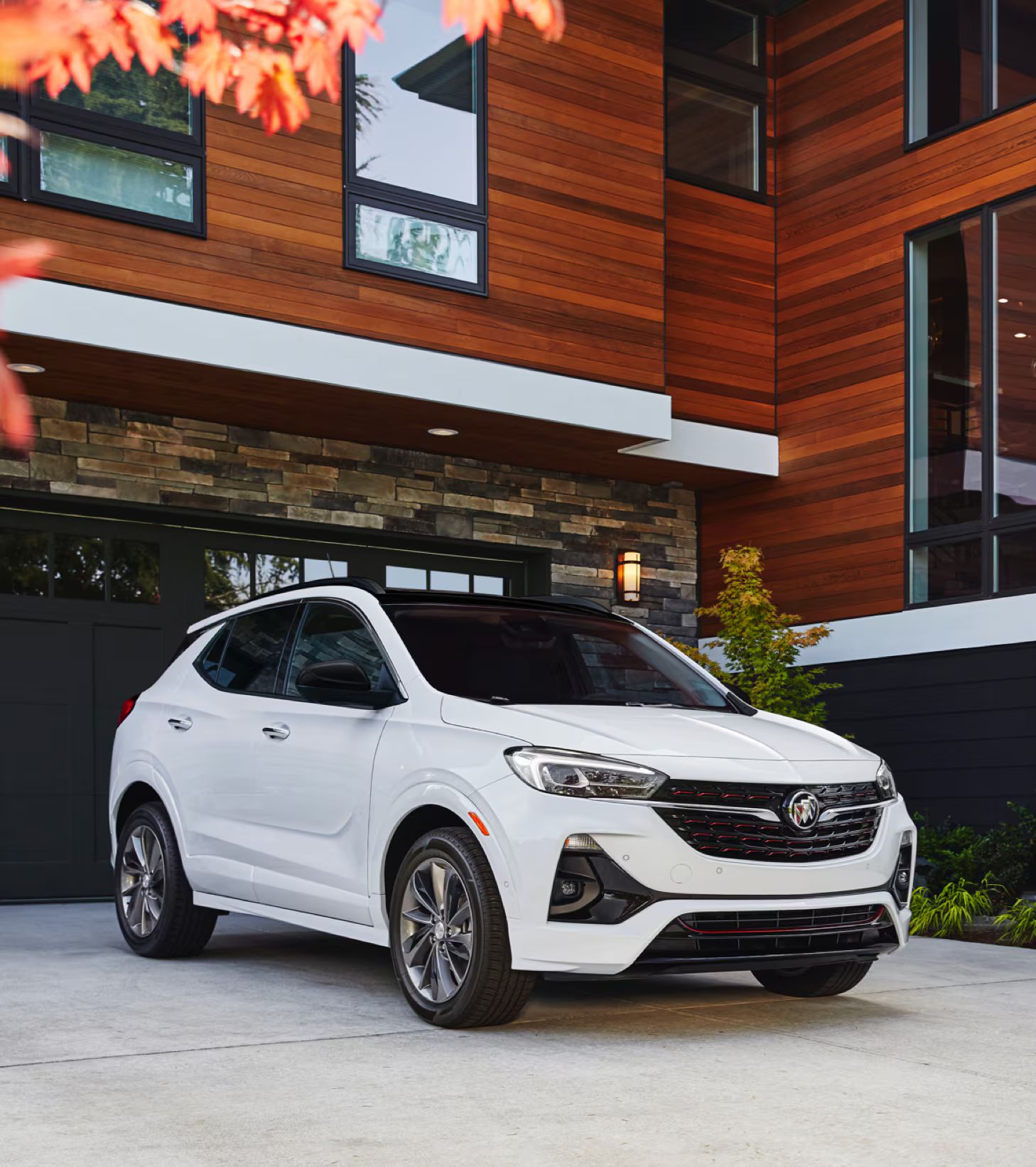
The allure of a luxury car is undeniable. It’s more than just a means of transportation; it’s a statement, a sanctuary, and often, a symbol of success and refinement. The smooth purr of a finely tuned engine, the sumptuous embrace of leather seats, and that uniquely isolated ride quality all contribute to an experience that transcends the mundane commute from point A to point B. For many, this dream embodies the pinnacle of automotive desire, promising comfort and style in equal measure.
However, behind the gleaming chrome and elegant lines lies a less glamorous but equally crucial reality: the cost of ownership extends far beyond the initial purchase price. For a significant number of luxury vehicles, the true financial commitment only begins after the factory warranty expires or the odometer registers its first major milestone. Routine services like oil changes, brake pad replacements, or spark plug intervals transform into exponentially more expensive propositions when dealing with high-end machinery. And then, there are the infamous ‘surprise repairs’—electrical gremlins, failing air suspensions, or complex infotainment systems deciding to cease function without warning—which can quickly deplete even a carefully planned budget.
Yet, the narrative isn’t universally bleak. Some luxury cars masterfully blend premium features, sophisticated styling, and unparalleled comfort with a surprisingly pragmatic approach to long-term ownership costs. These are the hidden gems, vehicles that deliver an exalted driving experience while steadfastly remaining mechanically sound and relatively inexpensive to maintain. This article aims to give you the full picture: five luxury cars that are surprisingly cheap to maintain, and five that, unfortunately, will drain your wallet month after month. We’ll begin by exploring the champions of affordable luxury—the models that offer more than just comfort and prestige, but also invaluable reliability and financial peace of mind.

1. **Lexus ES: The Benchmark for Reliable Luxury**The Lexus ES has long stood as a benchmark for what a reliable luxury sedan can be. Unlike its German rivals that often dazzle with aggressive styling and sporty handling, the ES emphasizes comfort, tranquility, and long-term dependability. Built on the same platform as the Toyota Camry, one of the most reliable cars ever made, the Lexus ES inherits Toyota’s core values—durability, ease of ownership, and low operating costs. This marriage of luxury and mainstream practicality is precisely why the ES consistently tops owner satisfaction surveys and maintains an excellent reputation in the used car market.
Under the hood, the ES usually sports a naturally aspirated V6 engine or, in more recent models, a hybrid four-cylinder. These engines are incredibly well-tested and are not burdened by the high-strain technologies like turbochargers or dual-clutch transmissions found in many European luxury models. Lexus keeps things elegantly simple, which translates into fewer potential failure points and significantly lower repair bills over time. Many owners report surpassing 200,000 miles with only regular oil changes, fluid replacements, and basic component maintenance—proof of the ES’s long-term viability.
Beyond mechanical reliability, Lexus shines in the service and ownership experience. Dealerships are generally regarded as more transparent and customer-oriented compared to some luxury counterparts. Lexus offers complimentary scheduled maintenance for the first couple of years and boasts a relatively low cost for out-of-pocket services beyond the warranty period. While the Lexus ES may not set your pulse racing, it delivers a quiet, refined cabin, a buttery smooth ride, and the priceless peace of mind that comes with low maintenance needs. It stands tall as the smart buyer’s luxury car, asking little but giving plenty.
Car Model Information: 2021 Lexus ES 350 Base
Name: Lexus ES
Caption: Lexus ES 350 (GSZ10)
Manufacturer: Toyota
Aka: unbulleted list
Production: June 1989 – present
Class: unbulleted list
BodyStyle: unbulleted list
Layout: unbulleted list
ModelYears: 1990–present
Categories: 1990s cars, 2000s cars, 2010s cars, 2020s cars, All-wheel-drive vehicles
Summary: The Lexus ES is a series of mid-size executive cars marketed since 1989 by Lexus, the luxury division of Toyota, across multiple generations, each offering V6 engines and a front-engine, front-wheel-drive layout. The first five generations of the ES used the Toyota Camry platform, while the latter generations are more closely related to both the Camry and the Avalon. Manual transmissions were offered until 1993, a lower-displacement inline-four engine became an option in Asian markets in 2010, and a gasoline-electric hybrid version was introduced in 2012. The ES was Lexus’s only front-wheel drive vehicle until 1998, when the related RX was introduced, and the sedan occupied the entry-level luxury car segment of the Lexus lineup in North America and other regions until the debut of the IS in 1999. The ES name stands for “Executive Sedan”. However, some Lexus importers use the name, “Elegant Sedan”. Introduced in 1989, the first generation ES 250 was one of two vehicles in Lexus’s debut range, along with the LS 400. The second generation ES 300 debuted in 1991, followed by the third generation ES 300 in 1996, and the fourth generation ES 300/330 in 2001. The first- through fourth generation sedans shared body styling elements with Japan-market Toyota sedans, and a domestic market equivalent, the Toyota Windom, was sold until the launch of the fifth generation ES in 2006. The word “Windom” is a combination of “win” and the suffix “dom” expresses a state of perpetual victory. The fifth generation ES used body styling marketed by Lexus as L-finesse and debuted in early 2006 as a 2007 model. The sixth generation ES debuted in the first half of 2012 as a 2013 model, and features increased cabin dimensions due to a longer wheelbase which is shared with the full-size XX40 series Avalon. Lexus has positioned the ES in the comfort luxury segment, with an emphasis on interior amenities, quietness, and ride quality, in contrast with more firm-riding sport sedans. Buyers seeking more performance-focused models are targeted by the Lexus IS and rival makes, with such models offering a sportier drive with differently tuned suspensions. In Europe, Japan and other markets where it was not available until the seventh generation model, the GS sport sedans occupy the mid-size category in the Lexus lineup until it was cancelled August 2020. In the United States, the ES has been the best-selling Lexus sedan for over fifteen years.
Get more information about: Lexus ES
Buying a high-performing used car >>>
Brand: Lexus Model: ES
Price: $27,278 Mileage: 81,355 mi.
Read more about: Beyond the Quarter-Million Mark: Our Shortlist of Cars Engineered for Extreme Longevity
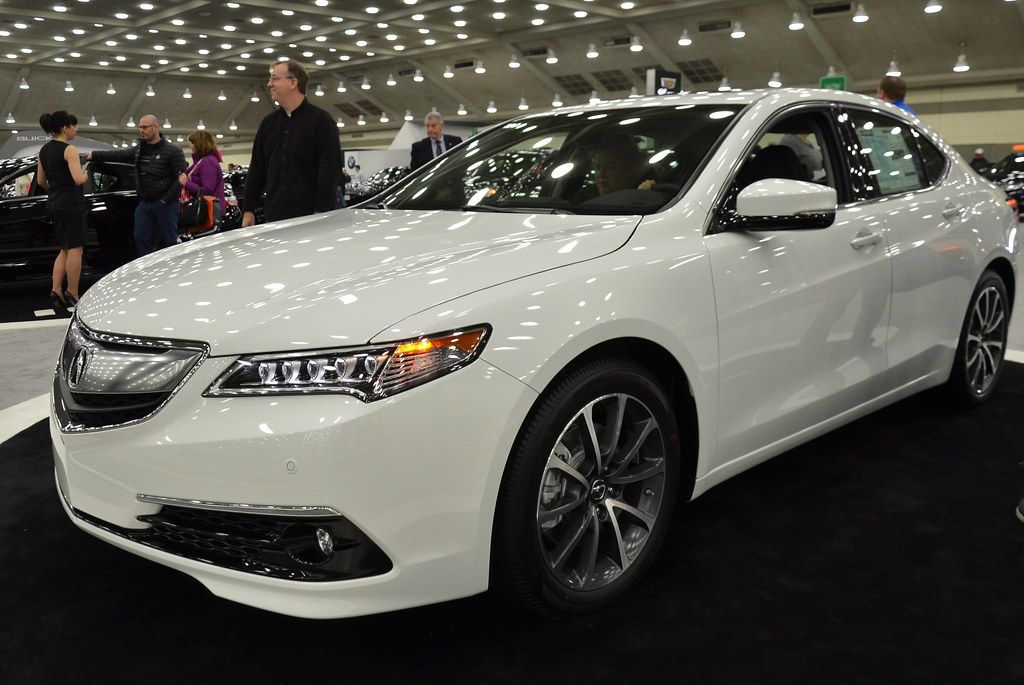
2. **Acura TLX: Blending Performance with Honda Reliability**The Acura TLX represents an attractive alternative to European luxury sedans, blending spirited performance, stylish design, and Honda’s legendary reliability in one compelling package. Unlike brands that prioritize innovation for innovation’s sake, Acura takes a more methodical approach, refining proven technology rather than adopting cutting-edge systems that haven’t stood the test of time. This deliberate engineering philosophy makes the TLX not just fun to drive, but also one of the most affordable luxury sedans to maintain over the long haul.
Many TLX models come equipped with naturally aspirated engines, especially in the earlier generations, lauded for their mechanical simplicity and bulletproof reliability. Even in newer models with turbocharged four-cylinders, Acura carefully engineers the drivetrain for endurance. Unlike BMW or Audi engines that often require costly maintenance around the 60,000 to 100,000-mile mark, TLX engines typically plug along smoothly with just routine oil and filter changes. The use of Honda-sourced components also ensures that parts are easy to find and reasonably priced.
Another area where the TLX shines is its balanced use of technology. Acura offers premium features—adaptive cruise control, lane-keeping assist, ELS Studio audio systems—but not at the cost of repairability. The tech isn’t overly complex or prone to malfunction. Acura’s SH-AWD system, while sophisticated, has a strong reputation for durability and doesn’t require excessive upkeep, unlike finicky European AWD systems. Owners often find Acura’s service network refreshingly straightforward, making the TLX an ideal choice for luxury without typical financial penalties.
Car Model Information: 2021 Acura TLX Base
Name: Acura TLX
Caption: 2016 Acura TLX
Manufacturer: Honda
Production: July 2014 – July 2025
ModelYears: 2015–2025
Class: Entry-level luxury car
BodyStyle: Sedan (automobile)
Layout: Front-engine, front-wheel-drive,Front-engine, four-wheel-drive layout
Predecessor: Acura TL,Acura TSX
Categories: 2020s cars, Acura vehicles, All-wheel-drive vehicles, All Wikipedia articles written in American English, Articles with short description
Summary: The Acura TLX is a four-door entry-level luxury sedan sold by Acura, a luxury division of Honda, since 2014 for the 2015 model year. It is the successor to both the TL and TSX models. The discontinuation of the RLX after the 2020 model year left the TLX as the flagship sedan in Acura’s lineup. Acura ended production of the TLX with the 2025 model year due to declining sales.
Get more information about: Acura TLX
Buying a high-performing used car >>>
Brand: Acura Model: TLX
Price: $28,969 Mileage: 39,377 mi.
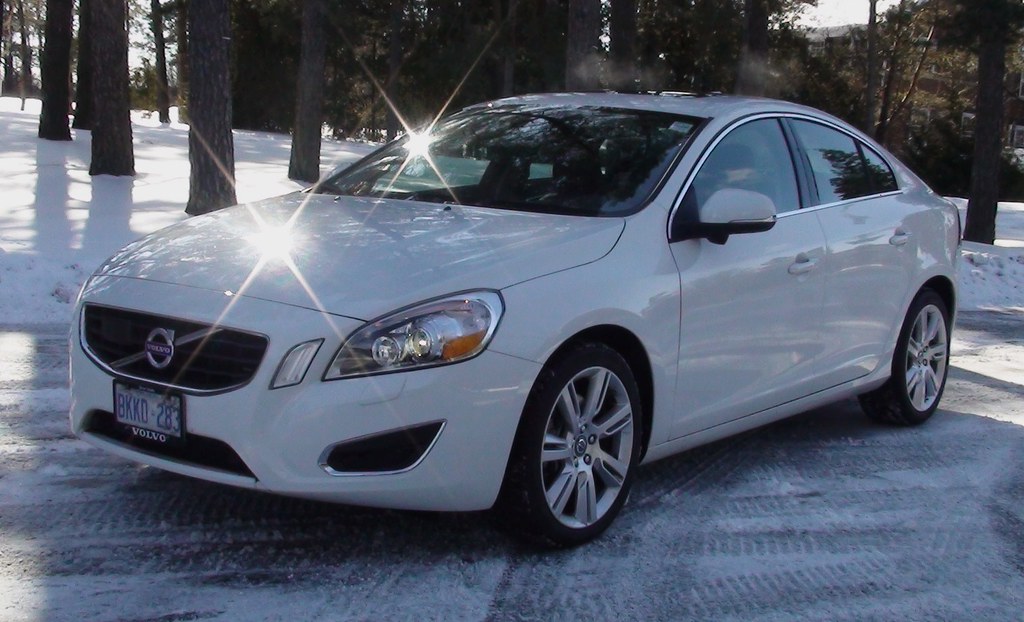
3. **Volvo S60: Swedish Sensibility Meets Affordable Luxury**The Volvo S60 may not get as much attention as its German competitors, but it’s a quiet achiever in the world of affordable luxury cars. With Swedish sensibility and a focus on functionality, safety, and longevity, the S60 blends luxury and simplicity in a way that few others manage. Volvo has a long-standing reputation for building sturdy, dependable vehicles, and the S60 carries that legacy forward with a modern twist, earning quiet nods of respect from those in the know.
Mechanically, the S60 features efficient turbocharged four-cylinder engines that are engineered for both performance and longevity. Unlike many European brands that push the envelope of power output to the detriment of reliability, Volvo keeps its powertrains modestly tuned, which significantly reduces wear and tear. These engines also tend to have longer maintenance intervals, fewer internal stress points, and a straightforward architecture that independent shops can work on without excessive labor charges.
What further distinguishes the S60 is Volvo’s emphasis on long-term value. Newer models come with free scheduled maintenance for the first few years, including oil changes and inspections. This proactive approach helps catch issues before they become costly problems and minimizes out-of-pocket expenses. For anyone who values safety, longevity, and tasteful luxury without the hassle of constant repair bills, the Volvo S60 is a compelling, underrated choice that proves premium ownership doesn’t have to come with a premium pain.
Car Model Information: 2024 Volvo S60 B5 Plus Dark Theme
Name: Volvo S60
Manufacturer: Volvo Cars
Production: 2000–2024
Class: Compact executive car
BodyStyle: sedan (car)
Layout: Front-engine, front-wheel-drive layout,front-wheel drive
Predecessor: Volvo S70
Related: Volvo V60,Volvo XC60
Categories: 2010s cars, All-wheel-drive vehicles, All Wikipedia articles in need of updating, All articles needing additional references, All articles with unsourced statements
Summary: The Volvo S60 is a compact executive car manufactured and marketed by Volvo Cars from 2000 to 2024.
The first generation (2000–2009) was launched in autumn of 2000 in order to replace the S70 and was based on the P2 platform, and the similarly designed estate version, the Volvo V70. A high-performance engine and sports-oriented suspension version called S60 R was launched at the Paris Motor Show in 2002. Styling cues were taken from the ECC concept car and the S80.
The second generation (2010–2018) was released in 2010 for the 2011 model year and has its own estate version, known as the Volvo V60.
The third generation joined the Volvo line-up in 2018 for the 2019 model year. It is built on a shortened version of the Scalable Product Architecture platform, in America’s first Volvo factory in Ridgeville, South Carolina. The US became the sole global source of the S60 sedan after production in China was phased out in early 2019.
The fourth generation (2019–2024) debuted in 2019. The final production run comes standard with a 247-hp turbocharged four-cylinder engine or as a plug-in-hybrid with 456 horsepower, all-wheel drive, and 41 miles of pure electric driving range.
Get more information about: Volvo S60
Buying a high-performing used car >>>
Brand: Volvo Model: S60
Price: $24,833 Mileage: 40,216 mi.
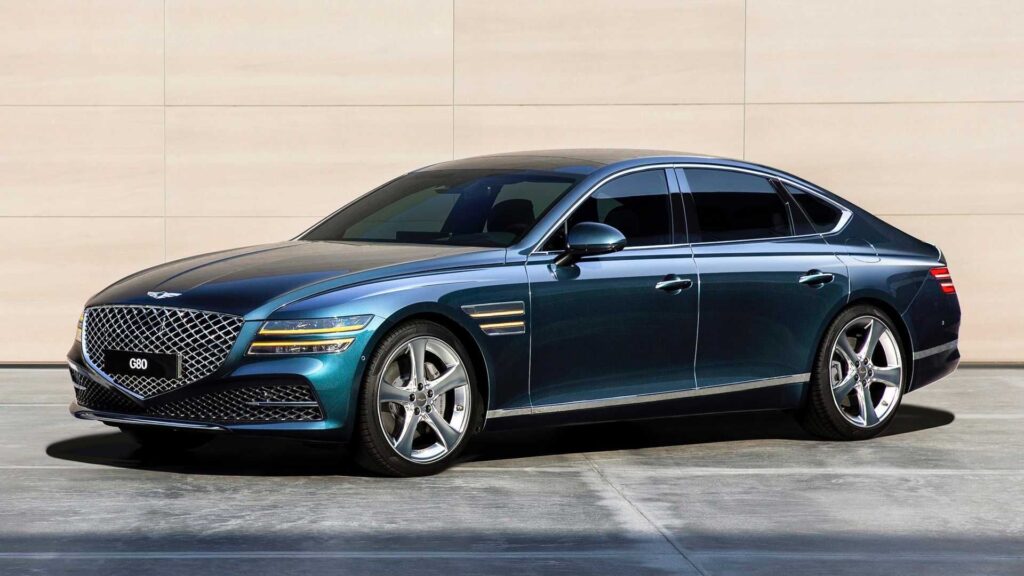
4. **Genesis G80: A Disruptor in Executive Luxury**The Genesis G80 is a relative newcomer in the luxury market, but it has quickly carved out a space as a disruptor. Developed by Hyundai’s luxury division, the G80 offers executive-class elegance at a surprisingly affordable entry point, both in terms of purchase price and maintenance costs. Many skeptics originally questioned whether Genesis could compete with the likes of BMW, Audi, and Lexus, but the G80 has answered decisively, matching competitors in refinement and beating them in long-term affordability and customer satisfaction.
Beneath its stately exterior, the G80 relies on time-tested powertrains that emphasize reliability over radical innovation. Naturally aspirated engines from earlier models and carefully engineered turbocharged engines in newer versions provide a good mix of performance and dependability. There’s a deliberate avoidance of overly exotic technologies like dual-clutch gearboxes or overly intricate suspension systems, which can become headaches as the miles stack up. The G80’s mechanical layout is clean and straightforward, allowing technicians to perform regular maintenance without tearing apart half the vehicle.
Another area where Genesis excels is ownership experience. The brand offers some of the most comprehensive warranties in the industry—up to 10 years or 100,000 miles for powertrain components. This level of coverage significantly reduces the financial risk of owning a luxury car. Genesis also provides complimentary scheduled maintenance for the first few years, and some models even include concierge service that picks up and drops off the vehicle for service appointments. The Genesis G80 dares to offer both true luxury and reliability, making it one of the smartest buys in luxury today.
Car Model Information: 2023 Genesis G80 3.5T
Name: Genesis G80
Caption: 2021 Genesis G80 (RG3)
Manufacturer: Genesis Motor
Production: ubl
ModelYears: 2017–present
Class: Executive car
BodyStyle: Sedan (automobile)
Predecessor: Hyundai Genesis
Categories: 2020s cars, All-wheel-drive vehicles, All Wikipedia articles written in American English, All articles with unsourced statements, Articles containing Korean-language text
Summary: The Genesis G80 is an executive sedan manufactured by South Korean luxury marque Genesis, which is owned by Hyundai Motor Company. The G80 model was previously introduced as the second-generation Hyundai Genesis model (DH) and then rebranded as the G80 in 2016 after Genesis Motor was established as a separate luxury division of Hyundai.
Get more information about: Genesis G80
Buying a high-performing used car >>>
Brand: Genesis Model: G80
Price: $44,874 Mileage: 39,294 mi.
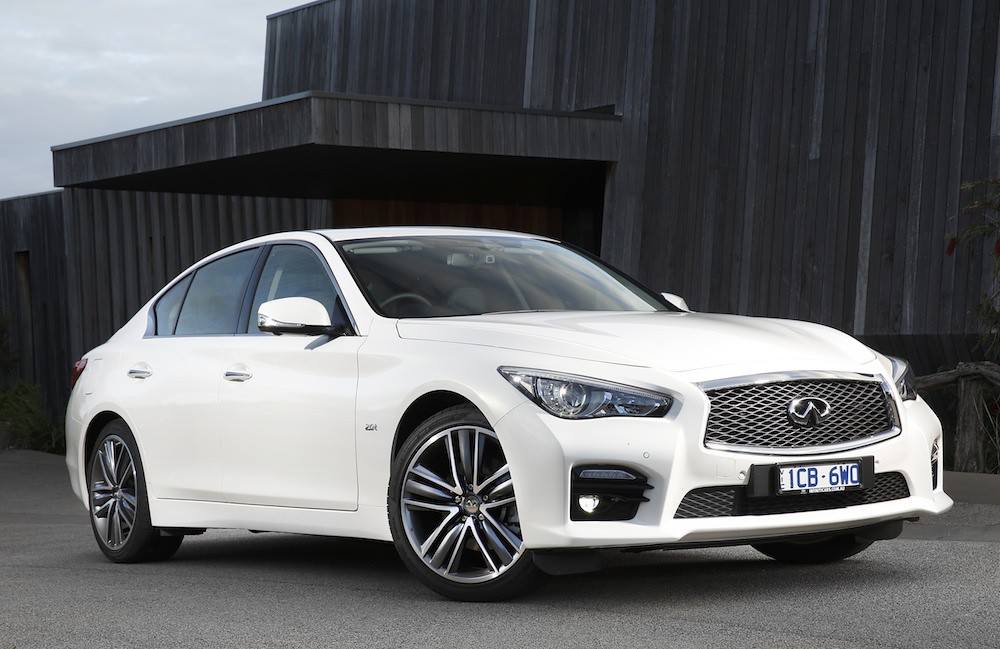
5. **Infiniti Q50: Sleek Style, Smart Upkeep**The Infiniti Q50 is a sleek, modern luxury sedan that delivers on style, performance, and surprisingly low maintenance costs. Often overlooked in favor of flashier German rivals, the Q50 quietly holds its own thanks to robust engineering, dependable drivetrains, and a long-standing philosophy of combining luxury with longevity. As Nissan’s premium brand, Infiniti benefits from years of tested technology and component sharing that ensures both affordability and wide serviceability.
One of the Q50’s strongest features is its powertrain lineup. The early models came with the tried-and-true 3.7-liter V6 engine—known for its bulletproof reliability and widespread parts availability. Even newer models featuring twin-turbo V6 engines, while more complex, have been engineered with a focus on durability and are far less prone to catastrophic failure than some of their German counterparts. These engines rarely require more than standard maintenance if serviced regularly, which is a major win for owners seeking peace of mind.
Infiniti’s approach to technology is also worth noting. While the Q50 comes loaded with features like dual touchscreens and driver assistance tools, the systems themselves are not overly complicated or failure-prone. In many cases, issues that do arise are minor and can be addressed quickly at relatively low cost. The cost of ownership remains stable and predictable, with insurance rates generally lower than for European luxury cars, and both routine service and major repairs falling into the affordable category compared to class norms. For buyers who want to enjoy luxury and performance without watching their savings evaporate, the Infiniti Q50 is a savvy and sensible choice.
Now, we turn the page to the other side of the luxury coin: vehicles that, for all their undeniable allure and engineering marvel, can quickly transform from dream machines into financial commitments that continually demand your attention—and your wallet. While the initial thrill of ownership is intoxicating, the reality of complex systems, proprietary parts, and specialized labor can lead to a very different long-term experience. Get ready for a candid look at five luxury cars renowned for their prestige, yet infamous for their wallet-draining maintenance costs.
Car Model Information: 2022 INFINITI Q50 LUXE
Name: Infiniti Q50
Manufacturer: Nissan,Dongfeng Nissan
ModelCode: V37
Aka: Nissan Skyline#V37
Production: 2013–2024
ModelYears: 2014–2024
Assembly: Kaminokawa, Tochigi
Designer: Joel Baek, Hirohisa Ono and Koichi Ishizuka
Class: Compact executive car
BodyStyle: Sedan (car)
Layout: ubl
Platform: Nissan FM platform
Related: Infiniti Q60
Engine: ubl
Motor: 68 PS Nissan HM34 high-response motor (hybrid models)
Transmission: ubl
Wheelbase: 2850 mm
Abbr: on
Length: convert,4850 mm
Width: 1825 mm
Height: convert
Weight: convert
Predecessor: Infiniti G
Categories: 2020s cars, All-wheel-drive vehicles, All Wikipedia articles written in American English, All articles lacking reliable references, Articles lacking reliable references from January 2020
Summary: The Infiniti Q50 is a compact executive car manufactured by both Nissan and Dongfeng Nissan for its luxury brand, Infiniti. Replacing the Infiniti G Line sedan, it debuted at the 2013 North American International Auto Show and went on sale in North America in the third quarter 2013 and in Europe in fourth quarter 2013. It is the export model of the Japanese domestic market’s V37 Nissan Skyline.
The design of the Q50 continues to follow the designs first shown by the 2009 Infiniti Essence concept and the production 2011 Infiniti M. The Q50 is also the first instance of a hybrid model in Infiniti’s entry-level model but was later removed for the 2019 model year.
Get more information about: Infiniti Q50
Buying a high-performing used car >>>
Brand: Infiniti Model: Q50
Price: $33,000 Mileage: 25,949 mi.
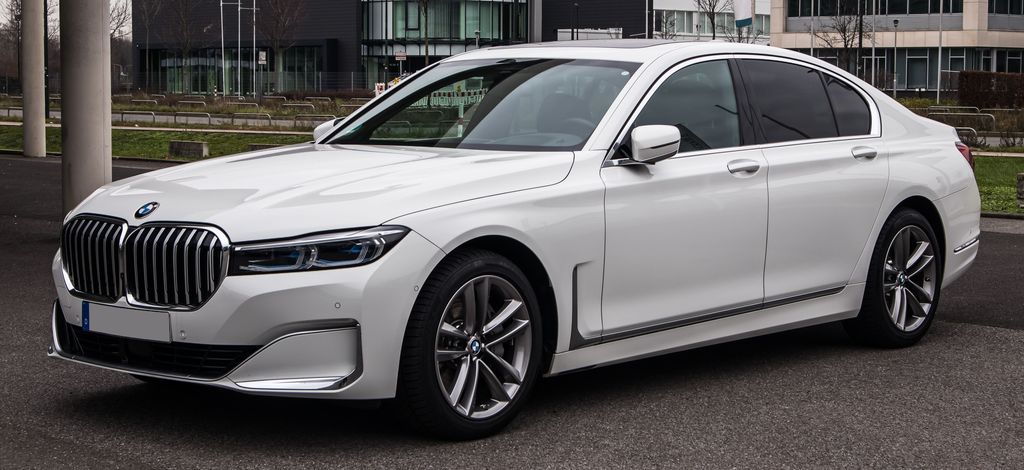
6. **BMW 7 Series: The High-Stakes Tech Tour de Force**The BMW 7 Series truly represents the zenith of German luxury, effortlessly blending supreme comfort, groundbreaking technology, and an opulent driving experience into one cohesive package. From its imposing grille to its meticulously crafted cabin, every element screams sophistication and performance. It’s a machine designed to coddle its occupants while delivering a driving dynamic that is uniquely BMW, making it a powerful statement on any road. Yet, beneath this polished exterior lies a maintenance profile that has a notorious reputation for challenging even the most prepared owners, transforming ownership into a high-stakes game.
One of the most persistent challenges with the 7 Series stems from its relentless pursuit of cutting-edge technology. Features like adaptive LED headlights, sophisticated air suspension, soft-close doors, plush massage seats, and even gesture control are nothing short of impressive—until they inevitably begin to falter. The real issue isn’t just their propensity to fail, but the eye-watering cost and sheer complexity involved in diagnosing and repairing them. These intricate failures frequently necessitate complete module replacements, often racking up thousands in parts alone, not to mention the premium labor rates charged by BMW-certified technicians.
Powertrain reliability also emerges as a significant concern, particularly with the potent turbocharged V8 and V12 models. Owners frequently report issues such as oil leaks from valve cover gaskets and turbo oil lines, along with coolant system failures that can lead to catastrophic consequences. Timing chain stretch, a common and expensive repair, and high-pressure fuel pump issues are also well-documented. These problems are not only frequent but are compounded by the tightly packed engine bay, which demands hours of specialized labor just to gain access to the faulty components, effectively turning what might seem like a straightforward repair into a costly nightmare.
Ultimately, the BMW 7 Series serves as a stark reminder that unparalleled luxury often comes with an equally unparalleled cost. While the vehicle undoubtedly delivers an exceptional experience behind the wheel, it also demands an unwavering financial commitment long after the initial purchase. It’s not uncommon for owners to face monthly repair or upkeep expenses that easily climb into the hundreds, even thousands, once the vehicle crosses a certain age threshold. For anyone contemplating a used 7 Series without the security of a robust extended warranty, you’re not just acquiring a car; you’re signing up for a potentially endless subscription to expensive, unpredictable surprises.

7. **Range Rover: The Status Symbol with a Secret Budget**Few vehicles command respect and project an aura of effortless status quite like the Range Rover. It’s the quintessential SUV for the discerning elite, a preferred choice among celebrities, business magnates, and even royalty worldwide. With its imposing presence, sumptuously appointed interior, and legendary go-anywhere capability, it’s remarkably easy to understand why so many drivers aspire to park one in their driveway. However, the glossy brochure hides a crucial truth: owning a Range Rover, especially the more extravagant Sport or Autobiography models, is less of a casual luxury dream and more of a serious financial commitment that owners should never, ever underestimate.
The Range Rover’s Achilles’ heel is arguably its incredible complexity. This formidable SUV is packed with an astonishing array of advanced systems, from its renowned adjustable air suspension and sophisticated dual-screen infotainment to intricate terrain response systems and a multitude of electronic control units (ECUs) managing virtually every single vehicle function. While this technological bounty promises a truly stunning driving experience when everything performs as intended, the sheer volume of interconnected components means the odds of everything working perfectly simultaneously for an extended period are, unfortunately, not in your favor.
Indeed, malfunctions are surprisingly common. Suspension failures, inexplicable sensor malfunctions, persistent electrical gremlins, and finicky infotainment glitches can surface even in relatively new models, disrupting the seamless luxury experience. Rectifying these issues is often a protracted and expensive ordeal, exacerbated by the limited availability of specialized parts and the absolute necessity for proprietary diagnostic tools. Furthermore, engine issues are a significant concern; the supercharged V6 and V8 engines, while potent, are prone to timing chain problems, various oil leaks, coolant loss, and even crankshaft bearing wear. Crucially, these major problems tend to manifest themselves precisely when the factory warranty has waved its final goodbye.
Labor costs for Range Rover repairs are among the highest in the entire industry, primarily due to the SUV’s notoriously tight engine bay and its inherent complexity, which makes even routine tasks a marathon. Even seemingly standard maintenance, such as a basic brake service or an oil change, can surprisingly cost significantly more than what you’d typically shell out for a comparable German luxury SUV. The Range Rover stands as a textbook example of how a blend of supreme luxury, off-road prowess, and cutting-edge technology ultimately comes with a brutal, long-term price tag. It’s a striking and powerful machine, but one that unfortunately also doubles as a formidable wallet assassin if you’re not adequately prepared.
Car Model Information: 2024 Ford Mustang GT Premium
Name: Range Rover (L460)
Manufacturer: Jaguar Land Rover
ModelCode: L460
Designer: Gerry McGovern
Production: 2022–present
Assembly: Solihull
Class: Full-size SUV
BodyStyle: Sport utility vehicle
Layout: Front-engine, four-wheel-drive layout
Platform: Jaguar Land Rover car platforms#MLA-Flex
Related: Range Rover Sport#L461
Engine: Petrol engine,Straight-six engine,twin-turbo,Diesel engine,3.0 L twin-turbo I6,3.0 L twin-turbo I6 MHEV,Petrol engine,3.0 L turbo I6 PHEV
Motor: ubl
Abbr: on
Drivetrain: class=nowrap,Mild hybrid,Plug-in hybrid,P510e/P550e)
Transmission: ZF 8HP transmission
Battery: Kilowatt-hour,Lithium-ion battery
Wheelbase: class=nowrap,{{convert,2997,mm,in,1,abbr=on
Length: class=nowrap,{{convert,5052,mm,in,1,abbr=on
Width: class=nowrap,{{convert,2047,mm,in,1,abbr=on
Height: 1870 mm
Weight: [object Object]
Sp: uk
Predecessor: ubl
Categories: All-wheel-drive vehicles, All Wikipedia articles written in British English, All articles containing potentially dated statements, All articles with unsourced statements, Articles containing potentially dated statements from 2023
Summary: The Land Rover Range Rover (L460), generally shortened to Range Rover, is the fifth generation of the Range Rover, a range of mid- and full-size luxury crossovers produced by Land Rover. It was revealed in London on 26 October 2021. The car is available in two different wheelbases, and the vehicle is available in guises consisting of petrol, petrol mild hybrid, petrol plug-in hybrid, and diesel mild hybrid. A seven-seater option was available slightly after launch.
Get more information about: Range Rover (L460)
Buying a high-performing used car >>>
Brand: Range Rover Model: Range Rover
Price: $48,997 Mileage: 24,328 mi.
Read more about: Steer Clear! Unpacking 13 Overrated Car Brands That Are All Hype, No Substance – Reliability Gaps & High Upkeep Drive Frustration

8. **Audi A8: The Spaceship that Lands on Your Bank Account**The Audi A8 is frequently hailed as a technological marvel, an executive sedan brimming with luxurious features and a design that consistently pushes aesthetic boundaries. As Audi’s flagship model, it directly competes with formidable rivals like the BMW 7 Series and the Mercedes-Benz S-Class, often enticing buyers with a slightly more accessible initial price point. However, this seemingly attractive entry fee can be deceptive. The A8, for all its sophistication, is no bargain when it comes to long-term ownership, as its maintenance costs possess a remarkable ability to spiral out of control, driven by intricate engineering, heavy reliance on electronics, and a recurring cast of common long-term reliability issues.
When it rolls off the showroom floor, a new A8 truly feels like piloting a spaceship. The experience is seamless, quiet, and profoundly advanced. Yet, once that crucial factory warranty expires and the car transitions into its used life, that spaceship can feel as though it’s making an unscheduled, very expensive landing directly into your bank account. One of the A8’s most notorious problem areas is its suspension system. Most models come equipped with adaptive air suspension as a standard feature, offering a supremely smooth and controlled ride when operating correctly. However, these air suspension systems are infamous for being prone to failure over time, and the replacement costs for air struts and compressors are exceptionally high, with installation proving equally difficult and time-consuming.
Leaks within the air system are a common occurrence, which can lead to an unsettling uneven ride height or, in more severe cases, a complete failure of the system, resulting in that dreaded “low-rider” stance that sends many an owner directly to a repair shop. Adding to the complexity are the A8’s engine choices. While the V6 models tend to be relatively more manageable from a maintenance perspective, the formidable V8s and the truly intricate W12 engines introduce a whole new level of mechanical complexity. Known issues include turbocharger failures, persistent oil leaks, carbon buildup that chokes performance, and timing chain failures—problems that are far from simple backyard fixes.
Addressing these engine woes demands specialized tools, advanced diagnostic equipment, and often the arduous removal of multiple components just to gain access to the part in question. Consequently, labor rates for A8 repairs can shockingly rival those typically seen for ultra-luxury brands such as Bentley or Maserati, reflecting the high level of expertise and extensive time commitment involved. Moreover, the A8’s electronics are pervasive—virtually every function is governed by complex software and a dense network of sensors. MMI infotainment system failures, power seat malfunctions, issues with adaptive lighting, and camera sensor glitches are all common complaints, often culminating in dealer-only repairs accompanied by outrageous markups. Owning an A8 without the safety net of a warranty truly becomes a high-stakes game of financial poker; despite all its beauty and refinement, the A8 is a luxury gamble that regrettably rarely pays off in the long term.
Car Model Information: 2025 Audi A8 L 55
Name: Audi A8
Manufacturer: Audi AG
Assembly: Neckarsulm
Production: #D2
Class: Full-size,luxury car
BodyStyle: sedan (automobile)
Platform: List of Volkswagen Group platforms
Layout: FF layout
Related: Audi S8
Predecessor: Audi V8
Categories: 2000s cars, 2010s cars, 2020s cars, All-wheel-drive vehicles, All articles lacking reliable references
Summary: The Audi A8 is a full-size luxury sedan manufactured and marketed by the German automaker Audi since 1994. Succeeding the Audi V8, and now in its fourth generation, the A8 has been offered with either front- or permanent all-wheel drive and in short- and long-wheelbase variants. The first two generations employed the Volkswagen Group D platform, with the current generation deriving from the MLB platform. After the original model’s 1994 release, Audi released the second generation in late 2002, the third in late 2009, and the fourth and current iteration in 2017. Noted as the first mass-market car with an aluminium chassis, all A8 models have used this construction method co-developed with Alcoa and marketed as the Audi Space Frame.
A mechanically upgraded, high-performance version of the A8 debuted in 1996 as the Audi S8. Produced exclusively at Audi’s Neckarsulm plant, the S8 is fitted standard with Audi’s quattro all-wheel drive system. The S8 was only offered with a short-wheelbase for the first three generations, being joined by a long-wheelbase variant for the fourth generation.
Get more information about: Audi A8
Buying a high-performing used car >>>
Brand: Audi Model: A8
Price: $77,428 Mileage: 935 mi.
9. **Jaguar XF/XJ: British Elegance, Unpredictable Demands**Jaguar’s XF and XJ models stand out as truly stunning examples of British automotive design, exuding a distinct personality that gracefully sets them apart from their often more clinical German counterparts. With their flowing lines, gracefully appointed interiors, and a driving experience that feels uniquely aristocratic, they offer a compelling alternative for those seeking a luxury sedan with character. Regrettably, that very uniqueness extends to their maintenance needs, which are notoriously unpredictable and often remarkably expensive. Jaguars have, unfortunately, grappled with reliability issues for decades, and while newer models certainly show improvements, they still carry the legacy of finicky electronics, questionable long-term durability, and a frustrating scarcity of readily available replacement parts.
One of the most profound drawbacks of owning a Jaguar XF or XJ is the undeniable inconsistency in build quality. While some fortunate owners report several years of blissfully trouble-free driving, an alarming number of others find themselves grappling with a litany of perplexing problems within mere months of ownership. Owners frequently report everything from malfunctioning sensors to premature failure of suspension components and intermittent electrical glitches that plague these otherwise elegant sedans. Jaguars are, regrettably, notorious for developing these nagging issues that necessitate frequent, often unexpected, service visits. Even seemingly minor problems can quickly escalate into major headaches due to the brand’s relatively lower production volumes and the consequently limited aftermarket support for parts and specialized repair knowledge.
The performance provided by Jaguar’s engines, while thrilling, often proves to be a double-edged sword. Both the supercharged V6 and V8 engines offer exhilarating acceleration and a wonderfully visceral driving experience, yet they are not celebrated as the most durable powertrains in the demanding luxury segment. Common and unwelcome issues include various oil leaks, timing chain stretch—a significantly expensive repair—cooling system failures, and persistent engine misfires. These problems typically have an inconvenient habit of arising just after the reassuring blanket of the factory warranty has expired, leaving owners exposed to significant costs.
Furthermore, the tightly packed engine bay and poor accessibility of many components mean that most repairs require extended labor hours, which inevitably drives up the cost significantly. Many independent shops, wary of the brand’s reputation for erratic behavior and hard-to-source parts, often outright refuse to work on Jaguars, forcing owners back to potentially more expensive dealerships. Even seemingly routine maintenance tasks, such as oil changes, brake jobs, or sensor replacements, tend to cost more than one might anticipate. Jaguar’s reliance on proprietary parts and diagnostic systems further ensures that servicing is not easily performed outside of the dealership network, inflating costs further. As much as these cars captivate with their elegance and performance, they frequently become regrettable purchases once the initial honeymoon phase succumbs to the cold reality of repair bills. Without an extended warranty or a substantial dedicated budget for unexpected repairs, the XF and XJ can swiftly transform from dream cars into daily financial burdens.
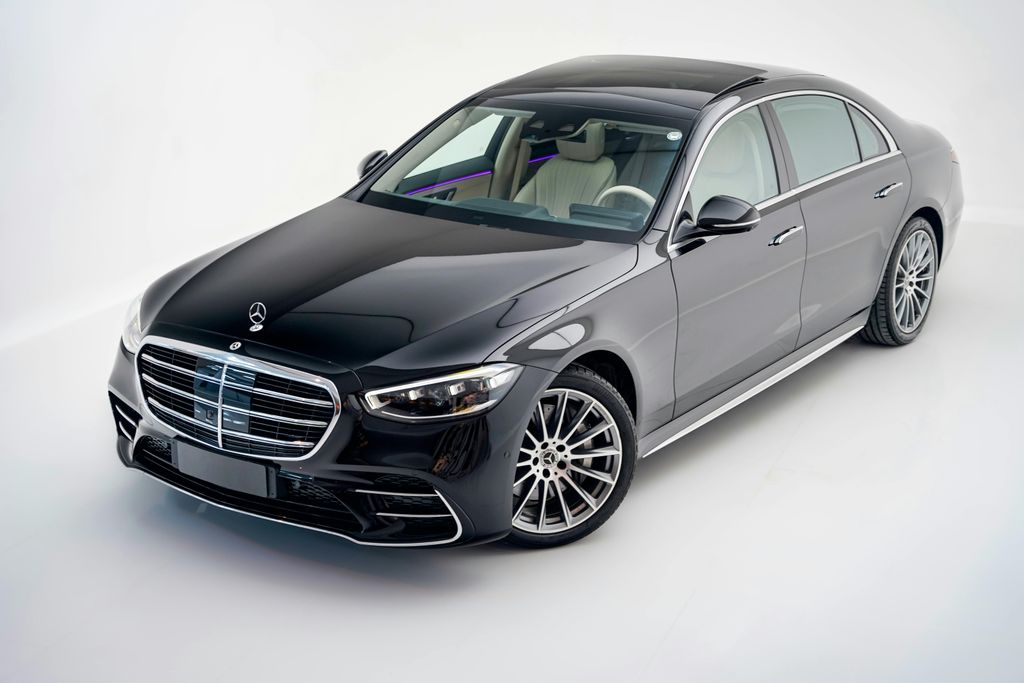
10. **Mercedes-Benz S-Class: The Golden Standard with a Platinum Bill**The Mercedes-Benz S-Class has long reigned as the undisputed gold standard for flagship luxury sedans, a powerful symbol of engineering prowess, unadulterated success, and pioneering innovation. With each successive generation, the S-Class consistently introduces groundbreaking technology years before it filters down and becomes commonplace in the broader automotive industry. From its sophisticated driver assistance systems to its opulent, tech-laden interiors, it sets benchmarks that others strive to emulate. However, that very spirit of relentless innovation, while exhilarating, comes with an undeniably steep price—quite literally—when it comes to long-term ownership.
The S-Class is consistently ranked among the most expensive vehicles to maintain, especially once it gracefully glides past the 50,000-mile mark and begins to venture outside the comforting embrace of its factory warranty window. Owning an older S-Class can quickly feel less like simply driving a car and more like actively funding an experimental tech program, with all the associated R&D costs landing squarely on your ledger. A primary contributor to the S-Class’s astronomical maintenance costs is its profound reliance on incredibly complex, intertwined systems. Features like the sophisticated air suspension, the active body control system, luxurious massaging seats, multi-zone climate control, dual-pane acoustic windows, and dozens of interconnected sensors and modules all contribute to the car’s unrivaled luxury experience.
Yet, this dazzling array also creates a staggering number of potential failure points. Crucially, these advanced features often don’t fail in isolation; instead, they tend to behave as interconnected systems, meaning a problem in one module can trigger a costly ripple effect across several others. Diagnosing these intricate issues can consume hours, often requiring specialized software reprogramming that only authorized Mercedes-Benz dealers are equipped and permitted to perform, further limiting repair options and inflating costs. The powertrains found in the S-Class are, without question, refined and incredibly powerful, yet they are also inherently high-maintenance.
From turbocharged V8s and formidable bi-turbo V12s to even the newer mild-hybrid systems, each introduces significant complexity. Common problems that frequently surface include persistent oil cooler leaks, crankshaft position sensor failures, and high-pressure fuel pump issues. Repairs for these intricate problems are further complicated by the S-Class’s tightly integrated engine bay, which often necessitates long labor hours just to remove multiple components simply to access the faulty part. Even seemingly basic jobs, such as replacing spark plugs or engine mounts, can surprisingly require several hours of shop time, quickly adding up to substantial bills.
If you’re contemplating the purchase of an older S-Class, particularly one without the invaluable protection of a comprehensive extended warranty, you should realistically prepare for repair bills that routinely cross into four-digit territory. While new S-Class models typically include complimentary maintenance and warranty coverage for a period, these generous benefits quickly expire. After that, you are essentially on your own, and that is not a position many owners particularly enjoy. The Mercedes-Benz S-Class may indeed embody the pinnacle of automotive luxury and technological advancement, but unless you are fully prepared to pay top dollar not just to acquire it, but also to diligently keep it running, it may very well prove to be one of the least wise long-term choices for your financial peace of mind.
***
Luxury cars represent a lifestyle as much as a mode of transport. They are a testament to design, engineering, and an owner’s success, but they also come with one of the most overlooked aspects of car buying: long-term maintenance costs. After exploring both ends of the spectrum in this article, one thing becomes abundantly clear: when it comes to luxury vehicles, not all that glitters is gold, and sometimes, it’s a very expensive illusion.
On one hand, we examined five vehicles that allow drivers to enjoy a first-class experience without putting themselves on a first-name basis with their mechanic. The Lexus ES, Acura TLX, Volvo S60, Genesis G80, and Infiniti Q50 all offer compelling value, not just in their MSRP, but in how they’re engineered for durability and ease of ownership. These brands and models have managed to strike a rare balance between sophistication and simplicity, often using proven drivetrains, common parts, and accessible servicing networks. As a result, their owners often report lower-than-average service costs and fewer unexpected breakdowns.
These cars prove that you don’t need to sacrifice dependability for luxury. They serve as a reminder that it’s not always about having the flashiest badge, but about choosing vehicles that have been thoughtfully engineered to last. The brands behind them—Lexus, Acura, Volvo, Genesis, and Infiniti—have clearly placed a premium on real-world usability, rather than betting everything on risky innovations or unnecessarily complex technology. They may not always have the brand prestige of their German rivals, but they more than make up for it in reliability, lower ownership costs, and peace of mind.
On the other side of the equation, we took a hard look at five vehicles that can cost a fortune long after the purchase check clears. The BMW 7 Series, Range Rover, Audi A8, Jaguar XF/XJ, and Mercedes-Benz S-Class are marvels of engineering when new—but their brilliance often fades into frustration once maintenance and repairs come into play. These vehicles are often packed to the brim with the latest tech, powerful (but temperamental) engines, and cutting-edge suspension systems that look great on a brochure but come with equally cutting-edge repair costs.
In truth, these models offer a cautionary tale about the hidden costs of ownership. High repair frequency, expensive parts, limited service options, and software-based features that require dealer-only fixes all contribute to their reputations as beautiful but high-risk investments. They serve as reminders that innovation, while exciting, can quickly become a liability if not paired with durability and accessible servicing. Many luxury owners who don’t do their homework learn the hard way that their monthly expenses aren’t limited to fuel and insurance—they include consistent trips to the service bay.
So, what does all this mean for prospective luxury car buyers? It means that research is critical. Don’t be swayed solely by horsepower numbers, panoramic sunroofs, or how the badge makes you feel. Dig into ownership reports. Understand the true cost of living with that vehicle over five to ten years. Consider not just how it looks in your driveway, but how it will perform when the odometer starts creeping up, and the warranty runs out. That’s when the real ownership experience begins.
Luxury isn’t just about what you drive—it’s how you feel while owning it. And if your vehicle constantly drains your wallet, keeps you at the service center, or fills you with anxiety every time a warning light appears, is it really luxury at all? True luxury offers performance, comfort, and elegance—without turning you into a stressed-out financier. Choose wisely, and you’ll find a car that not only turns heads but also stands the test of time—and your budget.


